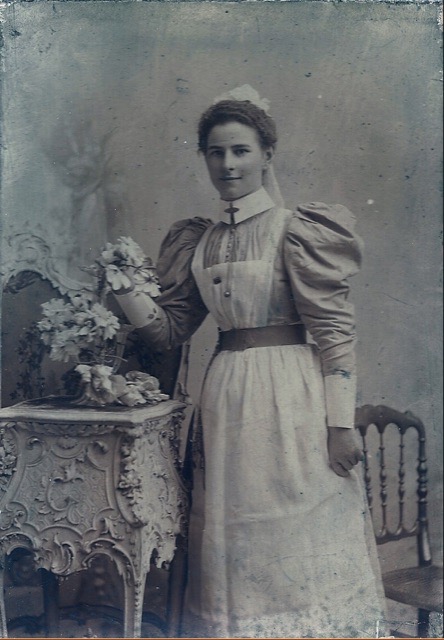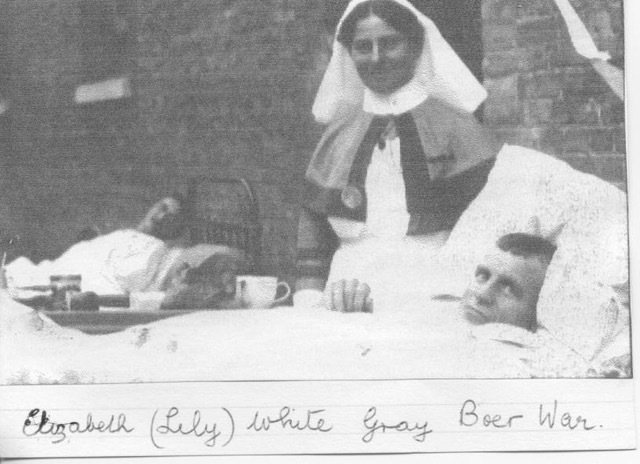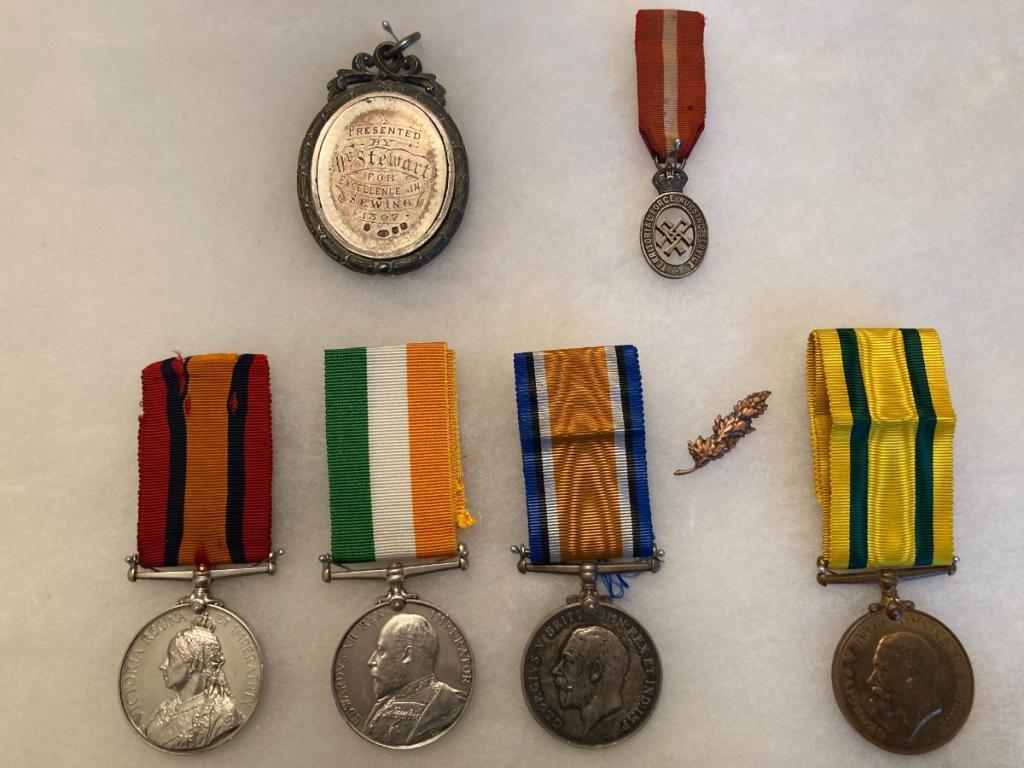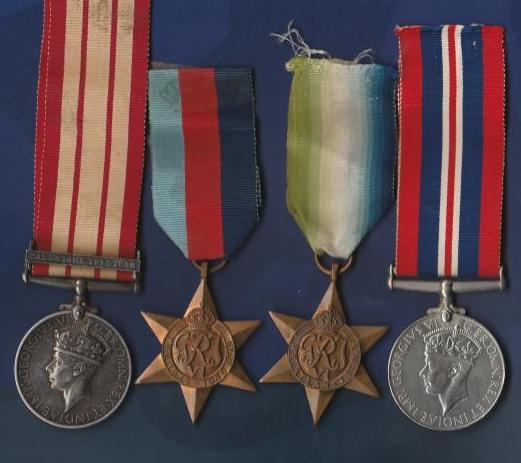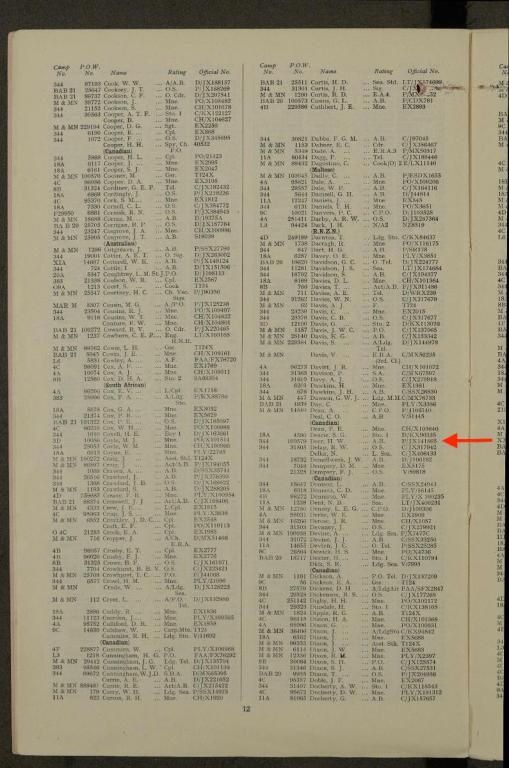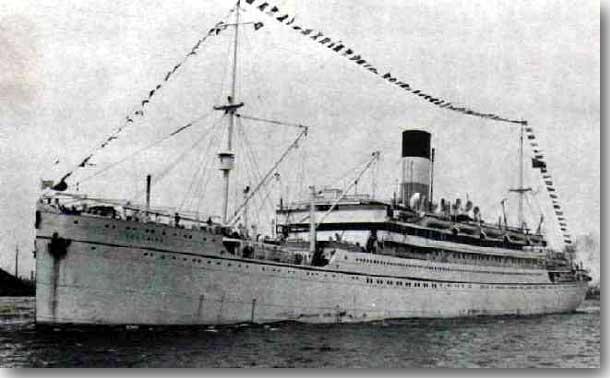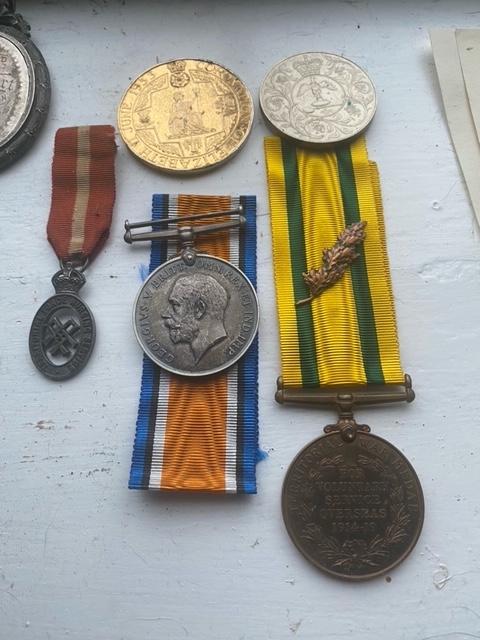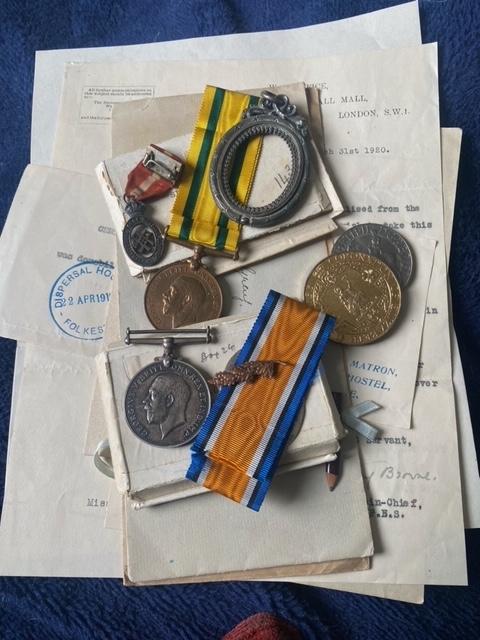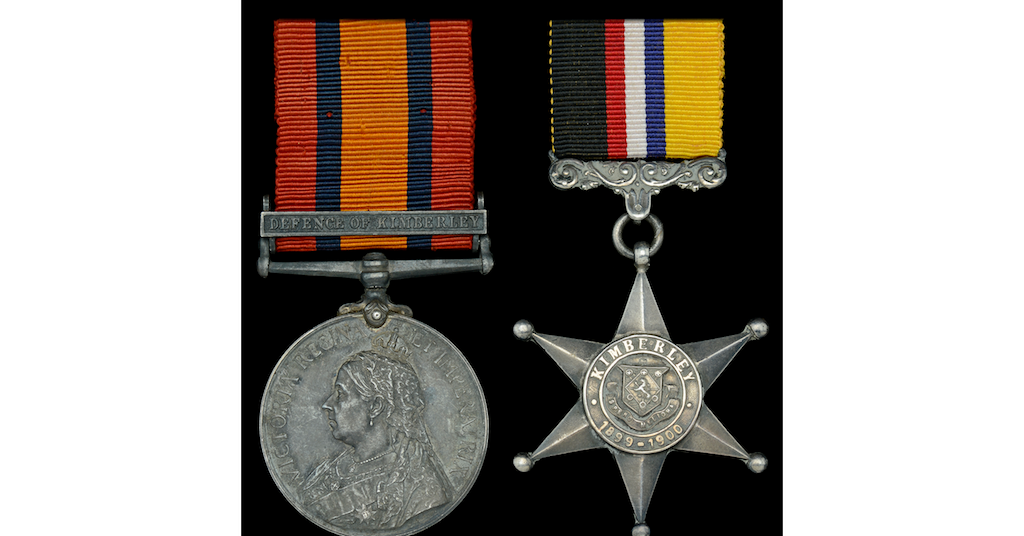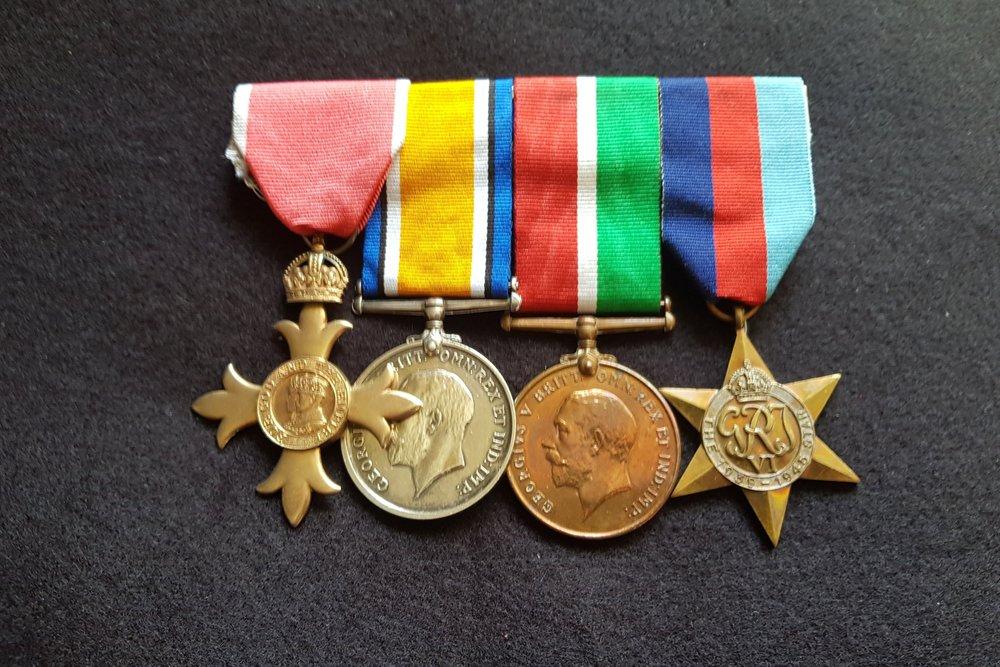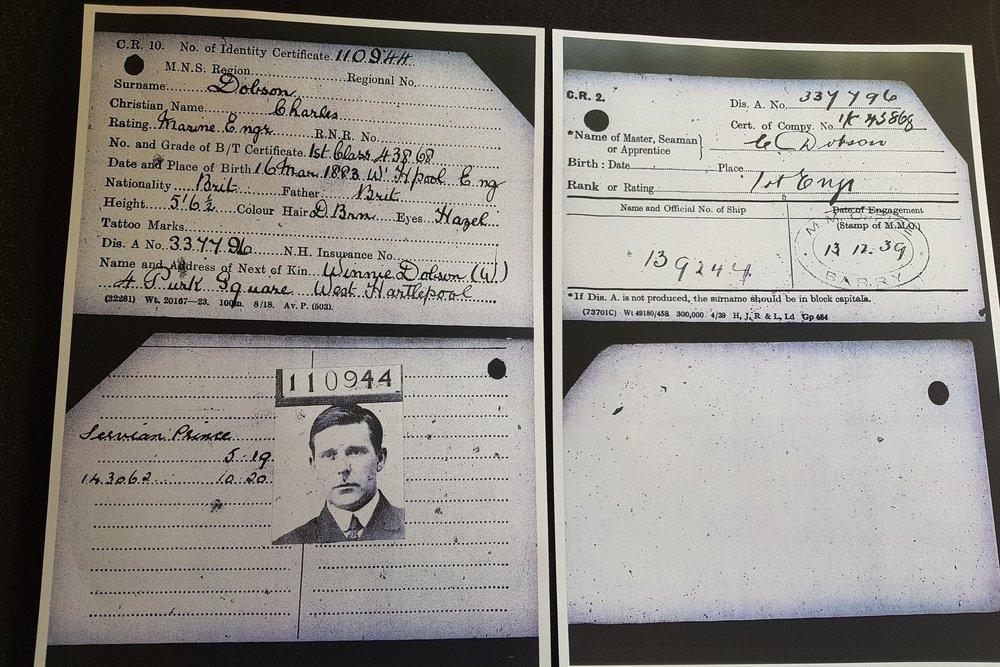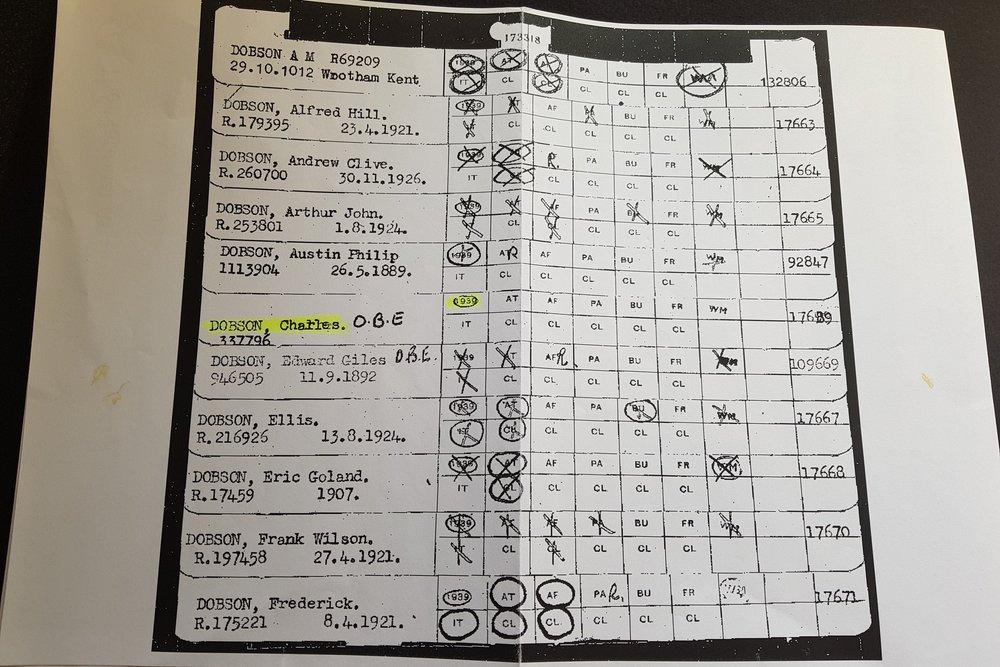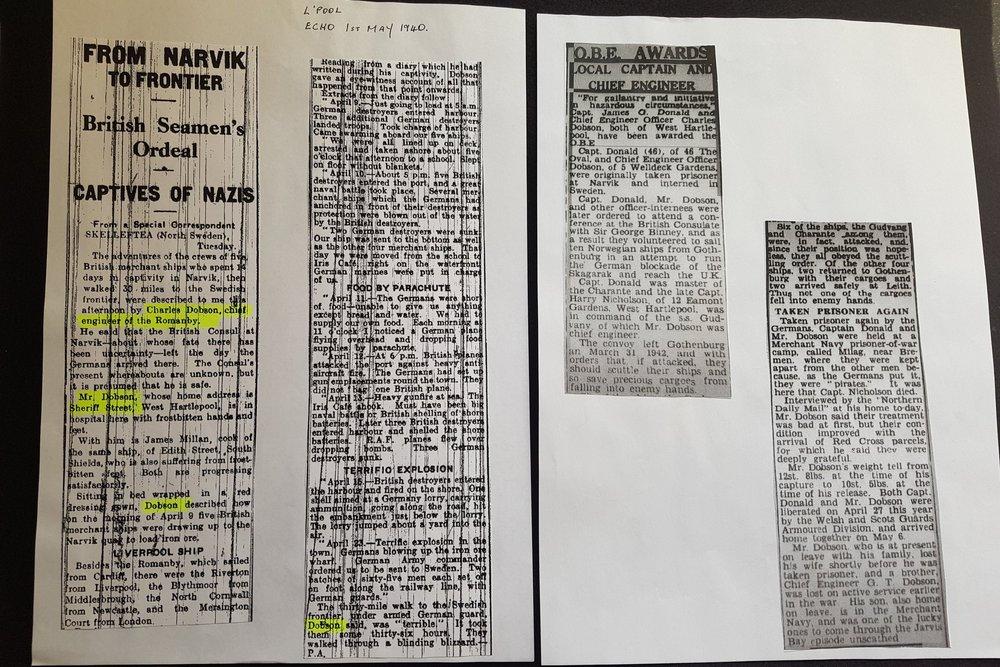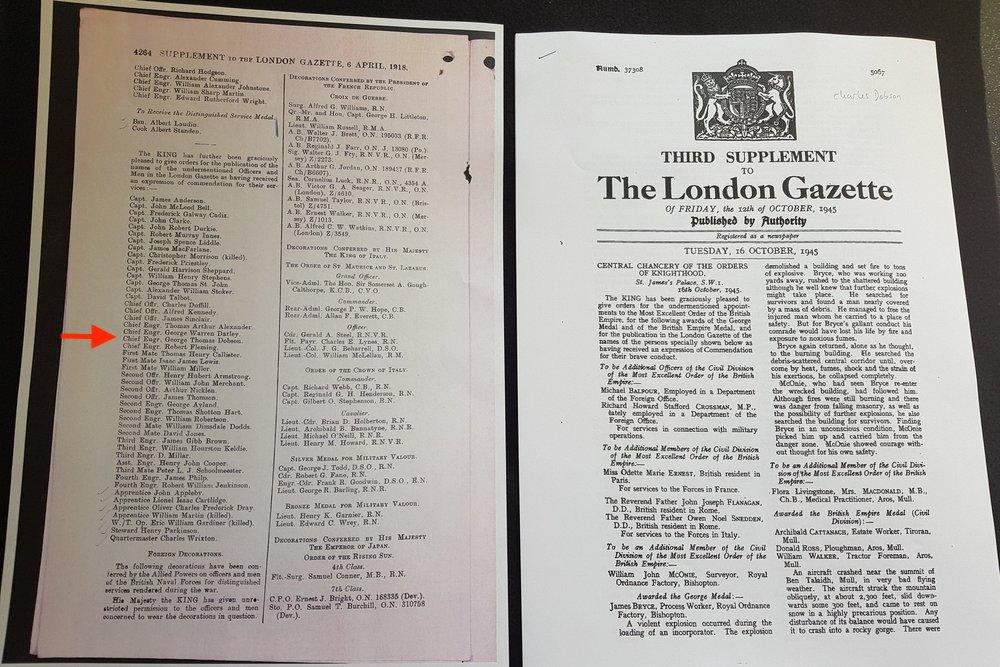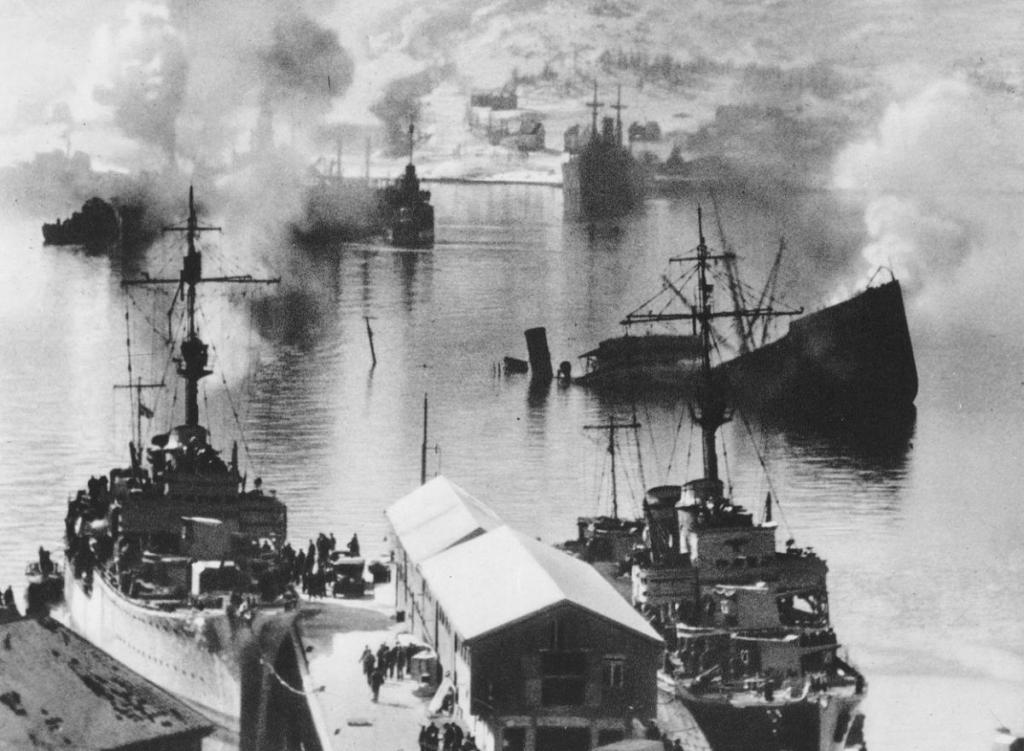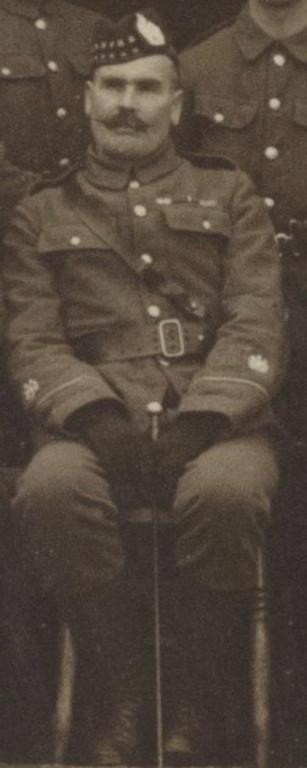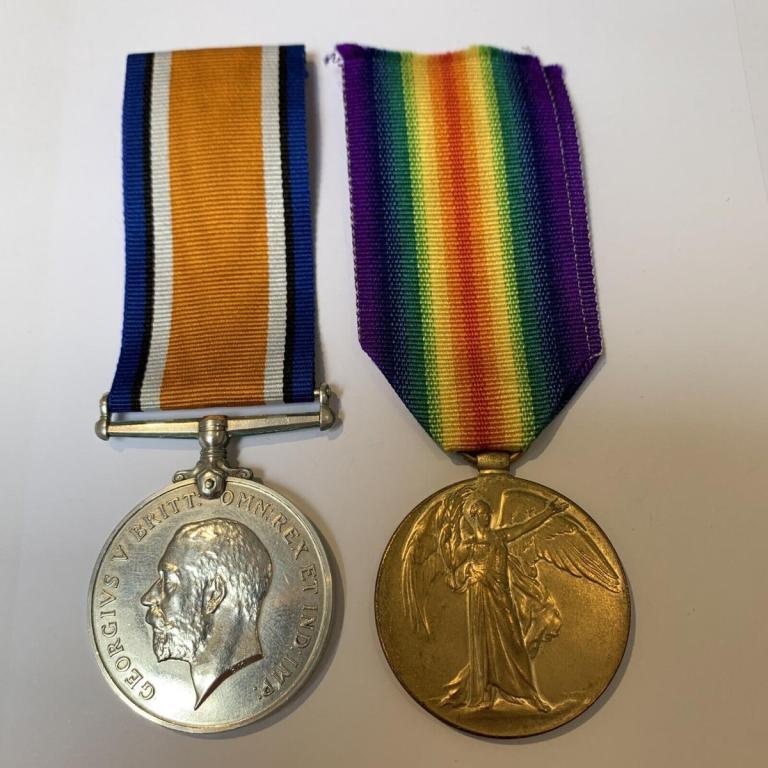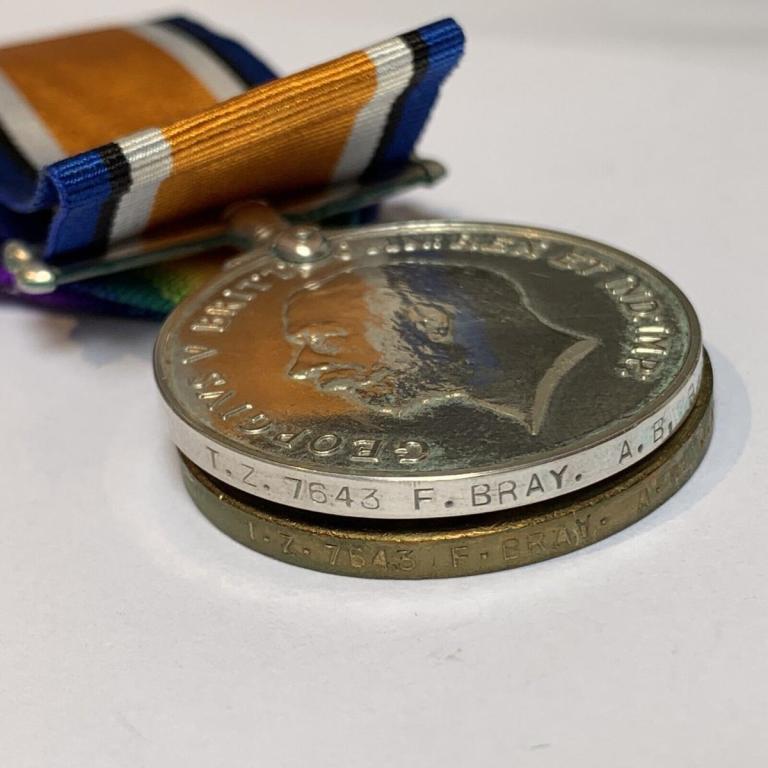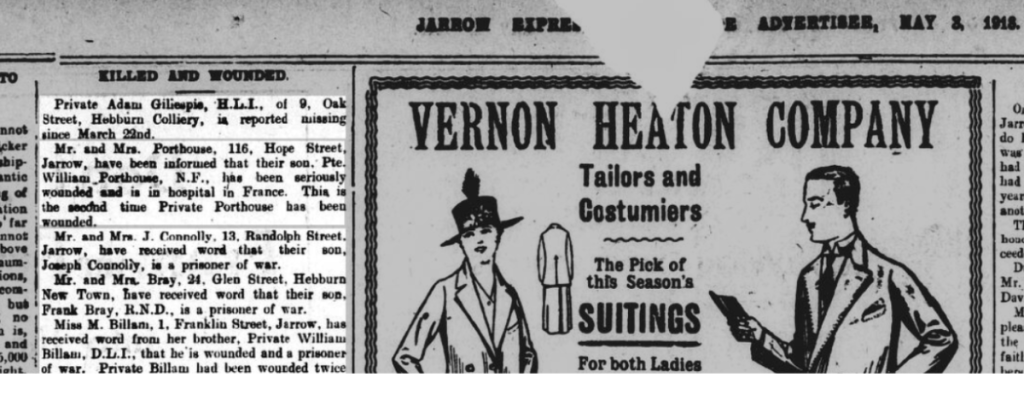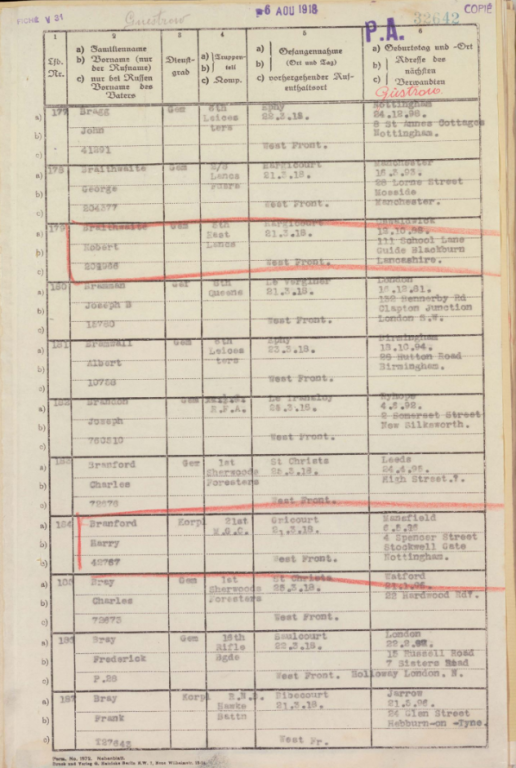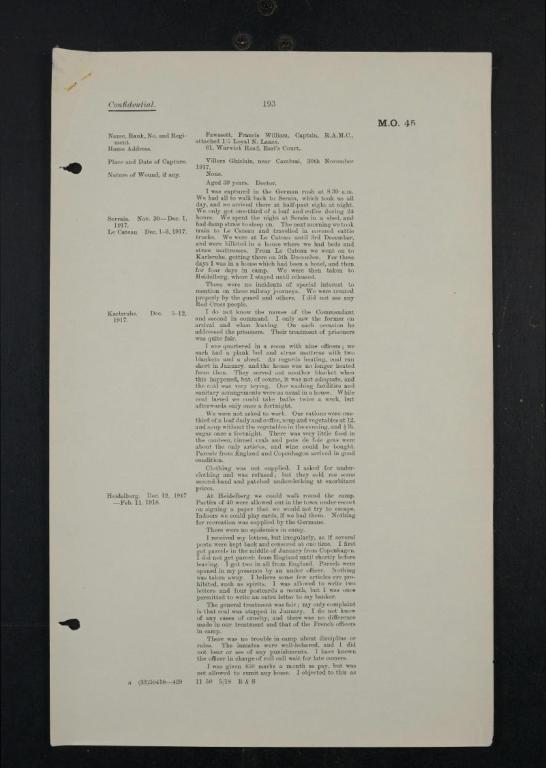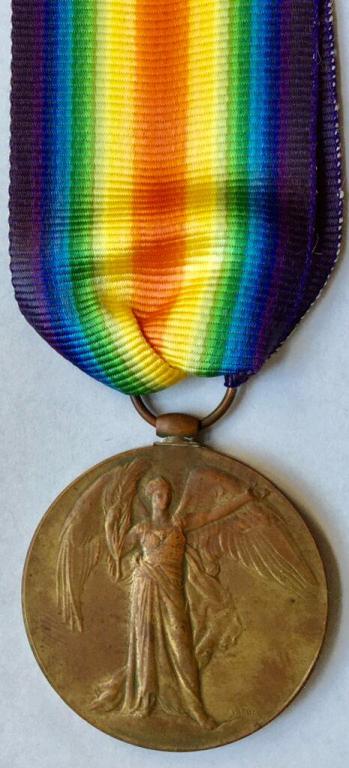-
Posts
1,801 -
Joined
-
Last visited
-
Days Won
10
Content Type
Profiles
Forums
Blogs
Gallery
Events
Store
Everything posted by azyeoman
-
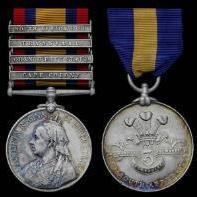
Queen Elizabeth II RIP
azyeoman replied to azyeoman's topic in Great Britain: Orders, Gallantry, Campaign Medals
I agree; there is no excuse for the way they treated her. -
Buckingham Palace has announced that Queen Elizabeth II, The United Kingdom’s longest reigning monarch died peacefully at Balmoral today. Rest In Peace.
-
Hi Gordon, Yes, she would have worn the PCANRS badge you’ve shown. It would have been numbered with her personal number, which was 555; although there are unnumbered ones. I have one numbered 406, which was worn by Nursing Sister Elizabeth Allen Couch who was awarded a QSA/KSA pair for her service in the war at No. 17 Stationary Hospital in Middleburg. They are very substantial Sterling silver badges and indeed stand out in photos. I understand that some were reissued to replacement nurses who arrived later on. I agree that her nursing buckle is very interesting.
-
Here’s a rare badge for the collection; the Royal Air Force Birmingham RAF PoW 'K' Club badge A rare original post Second World War period small gilt brass blue enamel example, inscribed to the surround 'Birmingham R.A.F. P.O.W. Club' with large 'K' to domed centre. It’s in very good condition, and complete with its original lapel fitting. There are no stress marks or damage to the enamel, and the gilt finish remains bright. The Diameter is 22mm. The Germans could not crush the Birmingham spirit, even when held as Prisoners of War. A group of RAF captives in the Stalag Luft 5 all proud Brummies in 1943/44 formed the “K” Club the aim to bring together a group with a common background to give each other mutual help and support during the difficult dark days of captivity. Their activities were printed in the Birmingham newspapers and the K club idea was taken up in other POW Camps. In the post war years the bond and fellowship of the POW in Birmingham continued and members proudly wore this badge.
-
Hi Gordon, if you look at the second nominal roll above, you’ll see Elizabeth Gray and underneath the note that she is “Now Mrs Brotherton”. So there is some evidence that at least one marriage was noted. This Is NOT the Elizabeth Gray whose medals I have, but another Elizabeth Gray. If GMIC would allow authors to edit beyond the first 24 hours, then I could remove it, edit and update the thread, alas…. I will most likely start another thread. I’m also writing an article for the Journal of the Orders and Medals Society of America, which will be up-to-date re research, photos, ephemera and the reunited medals. But, we do know now there were actually three Elizabeth Grays in the Boer War, two Brit’s and an Aussie who later became an matron and was awarded the ARRC. “My” Elizabeth Gray was Elizabeth White Gray, “Lilly” and her QSA & KSA are both officially named ( NOT renamed), and she was one of 277 women to receive the TFWM. What would be interesting to find out is whether the E. Gray who married was issued medals with her maiden name or with her married name. As for medals being returned for renaming due to marriage, I would agree with you that it is doubtful that happened. Perhaps Sister E. Brotherton’s medal is out there, and perhaps there are others who can clarify this conundrum. Now, you see why I bought the QSA/KSA to Sister Elizabeth White Gray, they were both officially named, and as such I had nothing to worry about. More to come as Lilly’s medals should arrive tomorrow. It’ll be fantastic to see them all together again.
-
Royal Navy groups are not common and this is a most interesting one to JX141865 AB H.W. Deer, RN NGS with Palestine 1936-39 Palestine Clasp 1939 Star Atlantic Star War Medal Deer was serving on board HMS Voltaire, which was sunk by the Kriegsmarine auxiliary cruiser Thor on 4 April 1941. The Action of 4 April 1941 was a naval battle fought during the Atlantic Campaign of the Second World War. A German commerce raider encountered a British auxiliary cruiser and sank her with heavy losses after an hour of fighting. Background The Kriegsmarine auxiliary cruiser Thor was raiding in the mid Atlantic in early 1941. On that cruise, the Germans engaged two other British merchant ships in surface battles but they ended indecisively. So when Thor encountered HMS Voltaire, her crew were already battle tested and anxious to sink an enemy combatant. Thor was 122 m (400 ft 3 in) long and weighed 9,200 long tons (9,300 t), she was armed with six 150 mm (5.9 in), two 37 mm (1.46 in) and four 20 mm (0.79 in) naval guns along with four 533 mm (21.0 in) torpedo tubes. The raider also carried an Arado Ar 196A-1 floatplane for reconnaissance and had a complement of 349 officers and crewmen. HMS Voltaire was larger than the raider—displacing 13,245 long tons (13,458 t)—but with a smaller crew of 269 men and officers. She had eight 152 mm (6.0 in) and two 76 mm (2.99 in) naval guns, including at least one anti-aircraft mount. Thor was returning to Germany when she found Voltaire heading to Freetown about 900 mi (780 nmi; 1,400 km) southwest of the Cape Verde Islands Action It was about 06:15 on 4 April when crewmen of Thor spotted smoke on the horizon. Captain Otto Kaehler assumed the vessel to be a coal burning ship so he altered course into the direction of the smoke. When the Germans were able to make visual contact with HMS Voltaire, they suspected she was a neutral ocean liner as she did not attempt to escape. The British—under Captain J.A. Blackburn—sighted the approaching Germans coming head on, so they fired a burst of anti-aircraft fire as signal for identification. A signal from Thor was not returned, but the British soon discovered the identity of the approaching ship at about 06:45, when it replaced the flag of Greece with a German naval ensign and fired a shot across Voltaire's bow. The British responded by manning their guns and firing a broadside with their mixed armament, but to no avail; they were outgunned and outranged. After only four minutes of dueling at around 9,000 m (9,800 yd) away, the Germans began striking Voltaire with their 150 mm (5.9 in) guns. The first shots entered the radio room and the generator room of Voltaire, heavily damaging the vessel, knocking out communications and steering gear and putting her into a list. Heavy fires also broke out and nearly covered the entire deck of the British ship. Despite the fire the Royal Navy gunners continued fighting for nearly an hour. For the next several minutes, the two sides fired; only one British shot managed to hit Thor, and it caused no casualties, the shot tearing off some radio equipment attached to the main mast. By 07:15, only two of the British 152 mm (6.0 in) guns were in action, while Thor circled around Voltaire, firing rapidly. At 08:00, the German's 150 mm (5.9 in) guns overheated so Captain Kaehler decided on a torpedo attack to end the engagement. But just as Thor was lining up to fire a spread, a white flag was observed aboard Voltaire and so the firing ceased. Captain Blackburn—having lost 72 men killed in action—gave the order to abandon ship and for the next five hours the Germans rescued 197 survivors, two of whom died later on and the rest became prisoners of war. Koehler also recorded that half of the rescued sailors were wounded. After the battle, Thor continued on to Germany to refit for a second raiding voyage. She had fired 724 rounds in a 55 minute battle, more than 50 percent of her ammunition Most of the PoWs were sent to Marlag und Milag Nord, but some such as AB Deer ended up in Stalag VIII-B (Lamsdorf), later numbered Stalag 344. The hospital facilities at Stalag VIII-B were among the best in all Stalags. The so-called Lazarett was set up on a separate site with eleven concrete buildings. Six of them were self-contained wards, each with space for about 100 patients. The others served as treatment blocks with operating theaters, X-ray and laboratory facilities, as well as kitchens, a morgue, and accommodations for the medical staff. The lazarett was headed by a German officer with the title Oberst Arzt ("Colonel Doctor"), but the staff was made up entirely of prisoners. They included general physicians and surgeons, even a neurosurgeon, psychiatrist, anesthesiologist and radiologist. In January 1945, as the Soviet armies resumed their offensive and advanced into Germany, many of the prisoners were marched westward in groups of 200 to 300 on Death Marches. Some died from the bitter cold and exhaustion. The lucky ones got far enough to the west to be liberated by the American army. The unlucky ones got liberated by the Soviets, who instead of turning them over quickly to the western allies, held them as virtual hostages for several more months. Many of them were finally repatriated towards the end of 1945 through the port of Odessa on the Black Sea.
-
Hi Gordon, if you check the threads re nurses medals on the AngloBoer War website, you’ll see that some nurses medals in the descriptions of their QSAs and KSAs are “officially renamed”. There are at least three that have that designation. The dealer from whom I bought these specifically mentioned in his write up of Gray’s medals that they were not “officially re-impressed”, which was an additional incentive for me. I don’t know why the govt would issue medals to nurses that had been officially re-impressed, but there are enough on the market and in collections that are. I think you’ll find the threads re nurses medals on that site must interesting as well as the entire site itself. Hope this helps.
-
I'm very pleased to say that I am in the midst of reuniting Lilly Gray's medals along with a lot of ephemera, and will post a photo of the reunited group (with the exception of her WWI British Victory Medal) once I have them all together. This is the largest reunite of the dozen or so I've done over 43 years of collecting. Oddly, all of them have been with Boer War related pairs and groups.
-

Remembering the Influenza of 1918
azyeoman replied to Brian Wolfe's topic in The Great War 1914 to 1918
An important thread. Thanks for starting it. My grandmother was quarantined by her parents; while her husband, my grandfather, was in the US Army in France. It’s a historical event that people should know about. -
Queen’s South Africa 1899-1902, 1 clasp, Defence of Kimberley (397 Pte. W. J. Spence. Kimberley Vol: Regt.); Mayor of Kimberley’s Star 1899-1900, reverse hallmark with date letter ‘a’, unnamed as issued. W. J. Spence attested for the Kimberley Volunteer Regiment and served with them during the Boer War at the Defence of Kimberley. He was discharged on 4 July 1901, he subsequently joined and served as a sergeant in the Cape Police Special Contingent. He was taken Prisoner of War at Zoutlief on 16 September 1901. The Police, including 'Special Police', numbered 233 under Major Berrange, and were part of the force starting from Vryburg under Major Paris on 2 March 1901. Lord Methuen in his report said on 6 March wrote "there had been some sniping at the rear-guard by about 100 of Van Zyl's commando, and seeing some confusion I went back myself, sending at same time for the section of the 38th Battery. I found the men forming the rear screen, which consisted of the 86th Company IY, very much out of hand, and lacking both fire-discipline and knowledge how to act. There seemed to be a want of instructed officers and non-commissioned officers". The enemy being accurately shelled, retired and took up a position at Tweebosch in the bed of the Klein Harts River. "Major Berrange" with the Police, the section 4th Battery and the pom-pom, were ordered to move straight on Tweebosch, while Dennison's Scouts, supported by Cullinan's Horse, were to move round the enemy's left flank. The commando retired rapidly, the Police under Major Berrange working with the greatest quickness. Much praise is due to Major Berrange for the way in which he handled his men". Shortly after moving off on the morning of the 7th, the rear-guard, consisting of Diamond Fields Horse and Dennison's Scouts, was most fiercely attacked. They were reinforced by other troops, but eventually the screen was broken, and after several hours' hard fighting the enemy captured the infantry and guns. Most of the mounted men took the Boer method of seeking safety in flight and reached the railway. During the fight, and after the screen was broken, Major Paris and Major Berrange were ordered to occupy a kraal. This they did with some 40 men, and they held out under heavy shell fire and "against repeated attacks" till the main body surrendered. In his telegram of 16th March Lord Kitchener said that in addition to the party of Cape Police in the kraal, "other small parties of Police continued to resist after the panic which had swept the bulk of mounted troops off the ground". The Lancashire Evening Post of 2 October 1901, article “Yeomanry Gallantry Run the Gauntlet” ‘A Press Association telegram from Cape Town Tuesday says: - The following further details have been received regarding the fight at Zoutlief, to the north of Vryburg on the 16th ult: On the evening of the 15th a column numbering 250 consisting of Cape Police, the Mounted Town Guard and two guns of the Royal Field Artillery, left Vryburg and reached Zoutlief in a storm of wind and rain. The next morning the column encountered a party of the enemy, of whom two were captured and two wounded. The mounted men proceeded to Thanet and found the Boers in strength. A hot engagement then ensued. The Boer’s who comprised Van Zyl’s and Van der Merwe’s commandos, and who were 400 strong, took up a position covering a house which appeared to be the enemy’s headquarters. The enemy were shelled vigorously but a number of shells failed to explode in consequence of the heavy rain of the previous night. Soon afterwards Keeley’s Scouts from Maribogo, reinforced the British left flank, and endeavored to cut off the enemy’s retreat, a company of the 5th Imperial Yeomanry from Devondale ran the gauntlet of the enemy’s fire in grand style in gallop to reach a kopje which it was necessary to hold. The men raced by ones and twos across the ground under the enemy’s fire, and gained their object with the loss of one killed and ten wounded. A body of the enemy who had been fighting in trenches near the farmhouse surrendered on condition of their lives being spared. They proved to be 14 well-known and dangerous rebels from the Vryburg district.”
-
An exceptionally interesting WII Merchant Navy '1945 Gothenburg Convoy' Immediate O.B.E Medal Group awarded to Chief Engineer Charles Dobson, Merchant Navy, who was twice a PoW; interned during the fall of Norway and again after the failure of the second Gothenburg Convoy having volunteered to serve with it despite being in his sixties. Chief Engineer Charles Dobson O.B.E. was born on 16 March 1883 in Hartlepool, County Durham. He served in the Mercantile Marine as a Chief Engineer during WW1, aboard S.S. War Jackdaw in July 1918. He remained in the Merchant Navy into the Second World War aboard the S.S. Romanby, when on the 9th April 1940, as it was loading iron ore in Narvik, Norway, an incident occurred which would change the course of his life. His diary is quoted in the "Liverpool Echo", 1 May1940, and states "April 9. ‘Just going to load at 5 a.m. German destroyers entered harbour. Three additional German destroyers landed troops. Took charge of harbour. Came swarming aboard our five ships. We were all lined up on deck, arrested and taken ashore about five o'clock that afternoon to a school. Slept on floor without blankets. April 10. ‘About 5 p.m. five British destroyers entered the port, and a great naval battle took place, Several Merchant ships which the Germans had anchored in front of their destroyers as protection were blown out of the water by the British destroyers. Two German Destroyers were sunk. Our ship was sent to the bottom as well as the other four merchant ships. That day we were moved from the school to Iris Cafe, right on the waterfront. German marines were put in charge of us.' His account continues noting air raids on 12/13 April resulting in three German destroyers sunk as well as a bombardment of the shore by British ships. It was decided to intern the British crews in Sweden and on 23 April, Dobson was one of those who endured a 36-mile march through a blizzard to their place of confinement. Despite being in his sixties at the time, Dobson survived. although he suffered from frostbite on both hands and feet. He continued to operate in the Baltic despite this experience and was one of the crewmen at Gothenburg in March 1942 who volunteered to bring a convoy of ten merchant vessels to Britain. The odds were slim and the convoy was intercepted by German warships, six ships scuttled themselves, two got through and two returned to port. The official report states: 'The Gudvang made a very spirited attempt to break out from the Skagerrak and was sailing for 22 hours before she was overhauled and forced to blow herself up' Dobson had volunteered to serve as Chief Engineer aboard the S.S. Gudvang and was again interned. The official report does credit to his bravery, stating: 'Mr. Dobson gave particularly helpful and exemplary service. In spite of being an elderly man he gladly assumed responsibility in this hazardous operation, the risks of which he fully appreciated. All these Officers volunteered to run the enemy blockade knowing that the enemy were fully aware of the proposed operation and had, in view of the success of a previous similar operation, taken exceptional counter measures. Although the ships were unsuccessful in running the blockade, it was due to the determination and co-operation of these Officers that the ships were prevented from falling into the hands of the enemy.' Dobson and other merchant seaman were taken to Camp Milag, Bremen where Captain Nicholson and others died of disease under the harsh conditions. They were liberated in April 1945 by elements of the Welsh and Scots Guards Armoured Division. Dobson returned to live in Hartlepool but died from a massive heart attack while visiting his son (who had served on the Jarvis Bay during the war) on the 27th February 1948. He was awarded an OBE and it was printed in the London Gazette on 16th October 1945, which stated 'For gallantry and initiative in hazardous circumstances'. His OBE was one of six immediate O.B.E. awards for the convoy.
-
I recently reunited Williamson's QSA (CC, Paard) with his Egypt 1882 (El-Teb_Tamaai, The Nile 1884-85) and Khedive's Star. As you can see, it's a striking group, but missing Williamson's EVII LSGC that he was awarded in 1908. If anyone knows the location of it, I would appreciate it very much if you would contact me as I'd like to reunite the entire group. Thank you in advance for any help. Best, John
- 1 reply
-
1
-
Hi Rob, That’s been my experience too and as you can see from this collection, this is the first one I’ve come across; this, my interest in adding it. Above in the thread, there is one Canadian who was tortured by the Germans in WWI. WWI c Canadian PoW medals are groups are rare like WWI New Zealand PoW medals. Thanks my friend.
-
Here's an interesting awarded to an Able Seaman who served with the Royal Navy Volunteer Reserve RNVR and who was taken prisoner of war on the first day of the German Spring Offensive in 1918. Both medals are officially are named to: T. Z. 7643 F. BRAY. A. B. R.N.V.R. Frank Bray was born on 24th May 1896 and he came from Hebburn New Town, County Durham. He enrolled into the Tyneside Division of the Royal Naval Volunteer Reserve on 4 October 1915, and was promoted to Able Seaman on 30 June 1917 and then to Acting Leading Seaman on 27 September 1917. He was drafted into the Nelson Battalion, Royal Naval Division for service with the Mediterranean Expeditionary Force in February 1916. He landed at Mudros on 28 February 1916. In June 1916 he was posted to the British Expeditionary Force on the Western Front, rejoining the Nelson Battalion on 16th June 1916. In early 1917 he suffered from severe trench feet and was evacuated to hospital at Etaples. After recovering, he was assigned to the 7th Entrenching Battalion in February 1918 and was then posted to the Hawke Battalion in March 1918. He was captured and taken prisoner of war on 21 March 1918, the first day of the German Spring Offensive. He was held at Limburg Camp and was repatriated in January 1919.
-
A most interesting acquisition. A WWI Victory Medal officially named to Capt. F. W. Fawssett. If you know of the location of Capt. Fawssett's 1915 Star & BWM, please contact me as I'd like to reunite them. With MIC and PoW repatriation interview report TNA WO161/97/44 taken at Millbank 26th February 1918. Francis William Fawssett was born in Hoton, Leicestershire on 14th October 1878 the third son of Reverend John Barrett Fawssett and his wife Emily. Franis graduated MRCS (England), LRCP (London) and MB (University of London) in 1903. He married Mildred Evelyne Williams fourth daughter of Rev E P Williams of 24 Pilbeach Gardens, London SW at St Cuthbert’s Church, Kensington 21st April 1904. The 1911 census records he is a 32-year-old Medical Practitioner residing with his wife, daughter and two servants at 260 Fore Street, Edmonton, Middlesex. Francis was commissioned into the Royal Army Medical Corps as a Temporary Lt. on 15 May 1915 (LG 15 June 1915), and served in France from 1st June 1915. In 1917 he was a Medical Officer attached to the 1/5th Battalion Loyal North Lancashire Regiment. He was taken prisoner of war at Villers Ghislain near Cambrai on 30th November 1917; "captured during the German rush at 0830." Dr Fawssett was held at Serrain 30th November to 1st December, Le Cateau 1st to 3rd December, Karlsruhe 5th to 12th December, Heidelberg 12th December 1917 to 11th February 1918. He left Heidelberg on 11th February for Aachen, where he spent four days, before going to Rotterdam and then home. Dr Fawssett described his life in the POW camps, "... on the whole treatment was fair, discipline good, and no ill treatment seen or heard of by the guards, parties of 40 were allowed into the town under guard after signing a paper to say we would not escape..." (See the transcripts in the attached photographs) During WWII, Fawssett became a Major and later an Acting Lt. Colonel in the Home Guard. His service date was 1 May 1941, and his duty location was with the Lincolnshire TA & AF Association at The Old Barracks, Burton Rd., Lincoln as he was in the Lincolnshire Divison (Lindsey Zone) Grimsby Group, 5th Lindsey (Grimsby Town) Battalion. The battalion was affiliated with the Lincolnshire Regiment and wore its cap badge. It was made up of platoons of men who were either too young or too old to serve. They word khaki uniforms and had a few rifles. Post war Dr Fawssett lived and practiced in Grimsby, Lincolnshire, The Grimsby Daily Telegraph 5th October 1950 page 5 records printed his obituary: DR F W Fawssett The funeral took place yesterday of Dr Francis William Fawssett (71) of 31 Chantry Lane, Grimsby. Dr Fawssett died in a London taxi on Friday while on the way to King’s Cross station after a holiday in Eastbourne. The service at All Saints Church, Grimsby was conducted by the Rev J Ashton followed by an internment at Scarthoe Road Cemetery.



